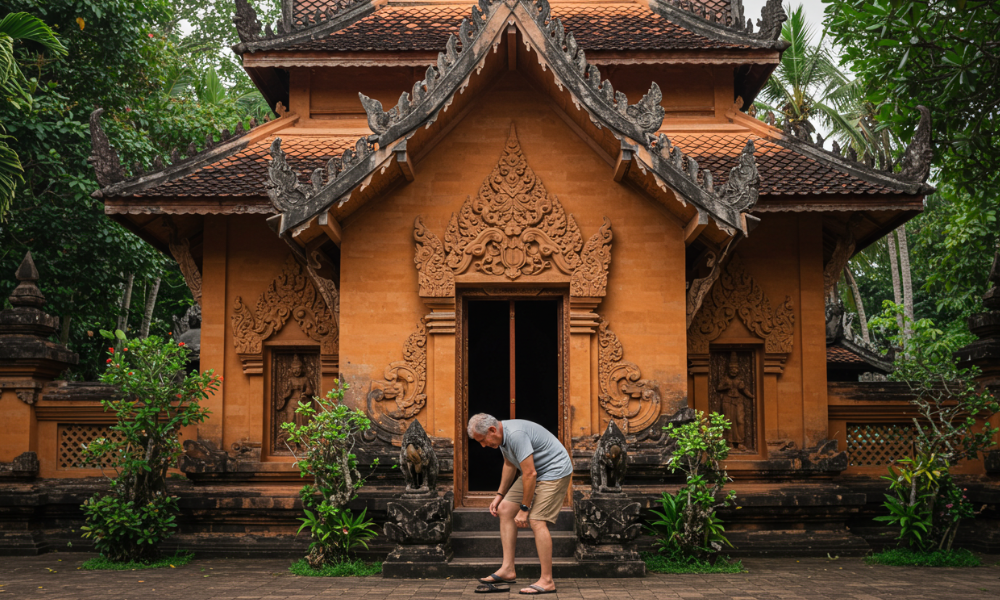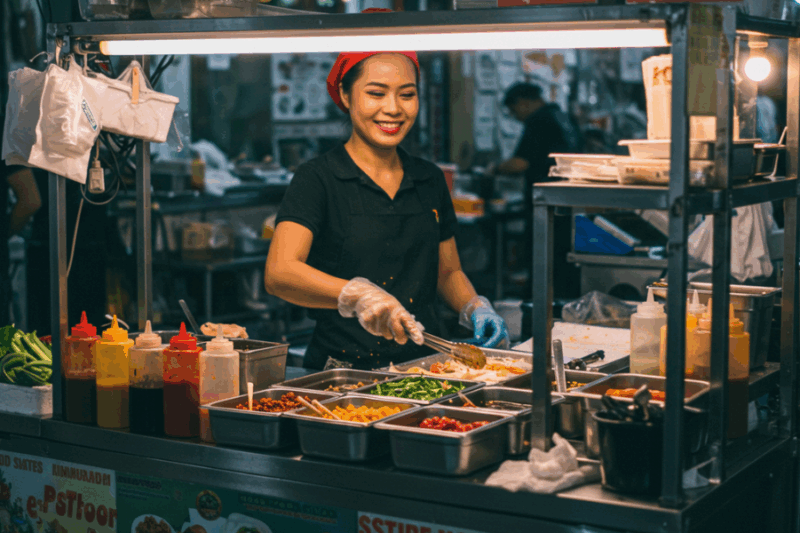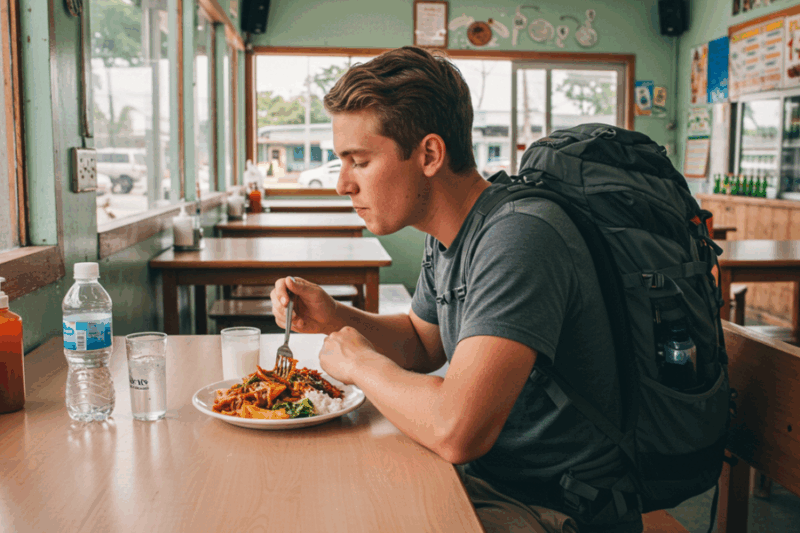
Southeast Asia—encompassing countries like Thailand, Vietnam, Indonesia, Cambodia, Malaysia, Laos, Myanmar, Singapore, Brunei, and the Philippines—is a vibrant region rich in cultural diversity, traditions, and hospitality. Understanding local customs is essential for respectful and enjoyable travel. This guide for 2025 outlines key cultural do’s and don’ts to help you navigate Southeast Asia with sensitivity and confidence.
General Do’s
- Do Dress Modestly: Cover shoulders and knees, especially at religious sites like temples, mosques, or churches. In Thailand’s Wat Arun or Cambodia’s Angkor Wat, wear long pants or skirts and sleeved tops.
- Tip: Carry a lightweight sarong or scarf ($2-5) for quick cover-ups.
- Do Remove Shoes: Take off footwear before entering homes, temples, or some shops, common in Thailand, Vietnam, and Indonesia. Look for shoe racks or follow locals’ cues.
- Tip: Wear slip-on shoes for convenience. Carry socks for temple floors.
- Do Greet Respectfully: Use local greetings to show respect. In Thailand, offer a wai (palms pressed together, slight bow); in Vietnam, a nod and “xin chào” (hello). Learn “thank you” (e.g., “khob khun” in Thai, “terima kasih” in Malay).
- Tip: Practice greetings via Duolingo or YouTube for pronunciation.
- Do Smile and Stay Polite: Southeast Asians value friendliness. Even in stressful situations (e.g., bargaining), maintain a calm, smiling demeanor to avoid confrontation.
- Tip: Use phrases like “sorry” (lao khot in Lao) to diffuse tension.
- Do Support Local Businesses: Shop at markets or eat at family-run warungs (e.g., $1-3 meals in Indonesia) to engage with communities and support livelihoods.
- Tip: Bargain politely, aiming for 60-70% of the initial price.
General Don’ts
- Don’t Touch Heads: The head is considered sacred in many Southeast Asian cultures, especially in Thailand and Laos. Avoid touching anyone’s head, including children.
- Tip: If accidental, apologize immediately with a smile.
- Don’t Point Feet: Feet are seen as unclean, particularly in Buddhist-majority countries like Myanmar and Cambodia. Avoid pointing feet at people, Buddha statues, or religious objects.
- Tip: Sit cross-legged or with feet tucked under when at temples.
- Don’t Disrespect Religion: Avoid criticizing religious practices or touching sacred objects (e.g., Buddha statues in Thailand). In mosques (e.g., Malaysia’s Masjid Jamek), women may need headscarves.
- Tip: Ask permission before photographing monks or rituals.
- Don’t Raise Your Voice: Losing your temper is seen as losing face, especially in Vietnam or Singapore. Stay calm during disputes, like taxi overcharges.
- Tip: Use Google Translate to clarify issues calmly.
- Don’t Publicly Display Affection: Excessive PDA (e.g., kissing, hugging) is frowned upon in conservative areas like rural Indonesia or Brunei. Holding hands is generally fine.
- Tip: Observe local couples to gauge acceptable behavior.
Country-Specific Do’s and Don’ts
Thailand
- Do: Respect the monarchy. Avoid negative comments about the royal family, as lèse-majesté laws are strict (up to 7 years imprisonment).
- Don’t: Step on money or deface images of the king, as they’re considered disrespectful.
Vietnam
- Do: Honor elders by addressing them first and using respectful terms like “anh” (older brother) or “chị” (older sister).
- Don’t: Stick chopsticks upright in rice bowls, as it resembles funeral incense and is taboo.
Indonesia
- Do: Use your right hand for eating, giving, or receiving items, as the left is considered unclean in Muslim-majority areas.
- Don’t: Wear revealing clothing in Bali’s rural areas or Aceh, where Islamic norms are stricter.
Cambodia
- Do: Learn about the Khmer Rouge history (e.g., via Tuol Sleng Museum, $5) to appreciate locals’ resilience, but ask questions sensitively.
- Don’t: Treat monks casually; women should avoid physical contact with monks.
Malaysia
- Do: Try diverse cuisines (Malay, Chinese, Indian) at hawker stalls ($1-3) to embrace multiculturalism.
- Don’t: Consume alcohol openly in public during Ramadan in Muslim-majority states like Kelantan.
Practical Tips for Cultural Respect
- Research Before You Go: Use travel blogs, Reddit’s r/travel, or Lonely Planet guides to learn specific customs. Watch YouTube vlogs for visual cues (e.g., how to wai).
- Budget: Plan $20-50/day for food, transport, and entry fees. Cultural activities like temple visits ($1-5) or cooking classes ($10-20) are affordable.
- Language: Download Google Translate with offline packs for Thai, Khmer, or Bahasa. Learn 5-10 phrases per country for goodwill.
- Health and Safety: Dress modestly to avoid unwanted attention. Carry hand sanitizer for markets. Get travel insurance ($30-50, World Nomads) for peace of mind.
- Connectivity: Buy a local SIM ($5-10 for 5-10GB) or eSIM (Airalo). Use Maps.me offline to find temples or markets.
- When to Go: June is rainy season in much of Southeast Asia (25-32°C). Visit early mornings for cooler temple tours. Carry a poncho ($2-5).
Why This Matters in 2025
Southeast Asia’s tourism is booming, with sustainable and respectful travel emphasized to preserve cultures. Missteps can offend locals or lead to legal issues (e.g., fines in Singapore for littering). By respecting customs, you’ll forge deeper connections and enrich your journey.
Final Thoughts
Navigating Southeast Asia’s cultural landscape is rewarding when you approach it with respect and curiosity. Start practicing these do’s and don’ts today—learn a greeting, pack a sarong, and read about your destination. From Thailand’s temples to Vietnam’s markets, these tips ensure you travel thoughtfully, leaving a positive impact. Embrace the region’s warmth and dive into your adventure!



